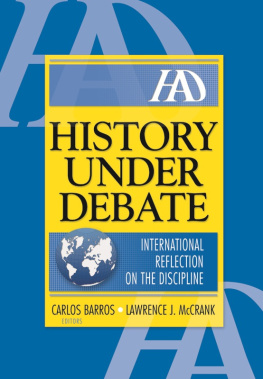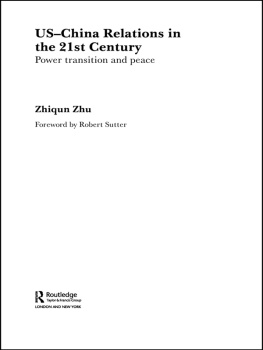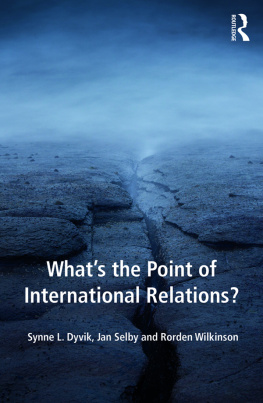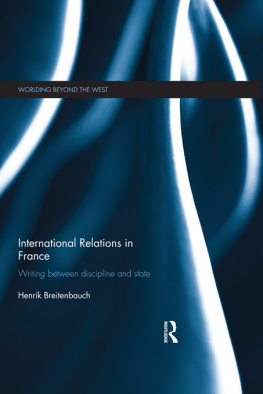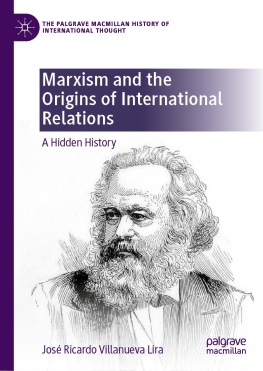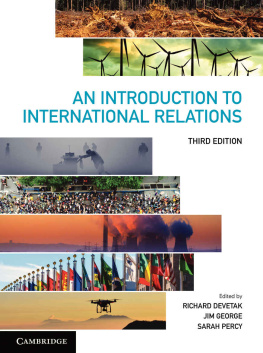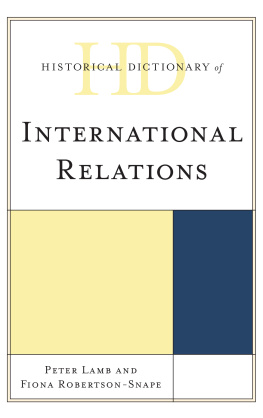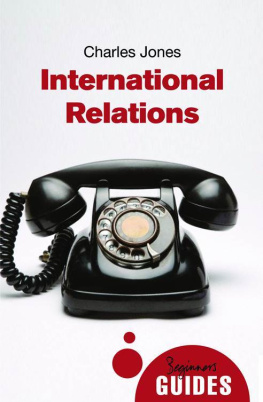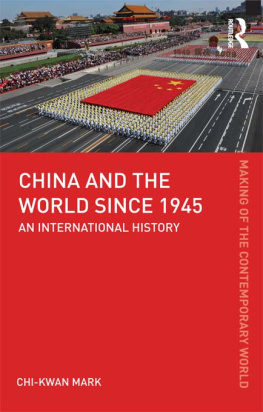HISTORY AND INTERNATIONAL RELATIONS
HISTORY AND INTERNATIONAL RELATIONS
FROM THE ANCIENT WORLD TO THE 21ST CENTURY
2nd Edition
Howard LeRoy Malchow

I must confess at the outset that previously my writing interests have been largely those of a historian of domestic, rather than international, relations, and of cultural and social, rather than political, phenomena; some IR scholars may regard that distance and late entry as a liability, and this book as a kind of impertinence. I of course prefer to think that it may offer the advantage of an outsiders perspective.
Outsider is not quite accurate. This text has been closely informed by my experience teaching an undergraduate introduction to International Relations (IR). Moreover, my previous work and teaching profited greatly from transnational, postcolonial approaches to the formation of domestic identities, ideas, and practices, approaches that emphasize transnational hybridity and circularity. When some years ago I turned, for a research project, to the familiar subject of the Anglo-American special relationship, a topic generally approached as essentially one of politics and foreign policy and of the clubby relationship of political elites, what seemed to be missing often was the larger and deeper cultural context in which American and British political affairs were enmeshed. Moreover, in a sense the discipline of IR itself, in its origins and discourse, is a product of this special relationship; that is, it has a significantly Anglo-American, transatlantic character.
This exploration has led to two general conclusions about what a social science of IR might be or ought to be. The first is, unremarkably, that the study of politics generally, including the politics of foreign affairs, can almost always profit from a more serious engagement with social and cultural contextsa commonplace in the discipline of History but, as will be clear below, a matter of some contestation among political theorists. Second, and perhaps more fundamental, is that IR has been too narrowly construed by both international historians and political scientists as relations among states within a system of states. Though such an assumption may have in the past been productive of interesting scholarship, there is growing reason to doubt its adequacy, either in explaining the past or, especially, in engaging the unfolding, borderless crises of our current era. In this text, I attempt to endorse the more holistic view, embraced by many Constructivists, that the field needs to seek a larger understanding of international relations and the history of international relations in a global realm of shifting identities, values, ideologies, and economic regimes.
This book owes a great deal to my students and my colleagues at Tufts University and beyond. Special thanks are due to the patient and wise, if often skeptical, advice of Daniel Mulholland. Among other colleagues, thanks are due to David Ekbladh, Steve Marrone, and Vickie Sullivan for their useful comments. I am indebted to John Fyler, master himself of lucid and thoughtful prose, for attempting to help me redress stylistic infelicities. Finally, special thanks are due to Erik Goldstein, past director of the flourishing IR program at Boston University, and long-time friend and colleague. Needless to say, what follows, however much improved by their kind advice, is my responsibility alone.
Somerville, Massachusetts
Since I finished the first edition of this book some five years ago, there have been changes in the world at large, some anticipated, others not, that have been of consequence for the discipline of IR. The continued rise of China as a global economic and more than regional political power continues to drive extensive discussion in the field, not only over the future of the world system and the relationship of the West to the rest but over important aspects of past and present IR theory. This edition addresses the gathering emergence of BRICS, including China, in IR discourse, and in general pays more attention to the familiar problem of Euro- or Western-centrism in the disciplines theory and practice. Material has been added on late antiquity and on the medieval Muslim world. The ever-continuing war against terrorism, and especially the violent attempt by ISIS to create a new caliphate in the Middle East, has promoted and sustained a post-secular turn in IR scholarship. It was necessary to address the recent contribution of religious studiesa sub-field that has in a decade or so moved from the margins to center stage in the discipline. Finally, the dramatic movement since 2016 in the West itself toward a politics of populist and xenophobic nationalism has done much to undermine confidence, some would argue, in the norms and institutions of Liberal Internationalism, producing lively debate over a major school of IR theory.
More generally, I have taken advantage of the opportunity a new edition provides of updating the sources upon which this work is based, adding, where significant new work has appeared, material both within the text and in the Recommended readings at the conclusion of each chapter. There are more maps, highlighting especially the more extensive treatment of pre-modern international relations beyond Europe. And in the Appendix readers will also find a new timeline chart locating the various schools of IR thought in their approximate chronological sequence, as well as a glossary of some terms used in this book, explained and located within their common IR usage.
The academic field of International Relations (IR) is a popular undergraduate concentration. This is especially true at American universities where, often to the puzzlementsometimes consternationof teacher-scholars in the humanities and social sciences, IR departments and programs, separate or embedded as concentrations within older disciplines, have flourished even as their parent fields may have stagnated or declined. This growth is reflected in both the numbers of students enrolled in IR courses and the growth of faculty engaged in IR research and writing, and in the institutionalization of the fieldin journals and electronic mailing lists (listservs) devoted to its interests and in scholarly organizations to promote professional contact and dialogue.
This textbook seeks to introduce, from the perspective of a practicing historian, IRs theory and practice to both undergraduate and graduate students of International History, as well as to students of IR and Political Science who may profit from a closer understanding of both the opportunities and the limitations of historical narrative and analysis. Its objective is to offer not just a general introduction to the discipline of IR, but to address ways in which History can inform and perhaps interrogate IR scholarship, as well as ways in which IR may inform History. We shall do this first by placing the field itself into its own historical contexts, relating both its institutional development and its central concerns and theories to the larger history of the times. That is, we shall historicize the discipline. We shall then examine a series of historical eras and events that have been highlighted in much IR scholarship as significant in defining the discipline and establishing its key concepts. We shall conclude with some observations about the current state of the special relationship between the disciplines of History and IR.
This is, of course, to beg the question whether IR is properly a discipline at all, or whether it can best be understood as located within a larger parent field such as History (as diplomatic, international, global, or transnational history), as is the common orientation in Great Britain, or, as often in America, in Political Science (where IR is one of its major concentration fields). Or is it, as many IR programs in American universities declare, a composite discipline, an interdisciplinary or multidisciplinary fieldwith all the richness but also epistemological ambiguity that may suggest?
Next page

